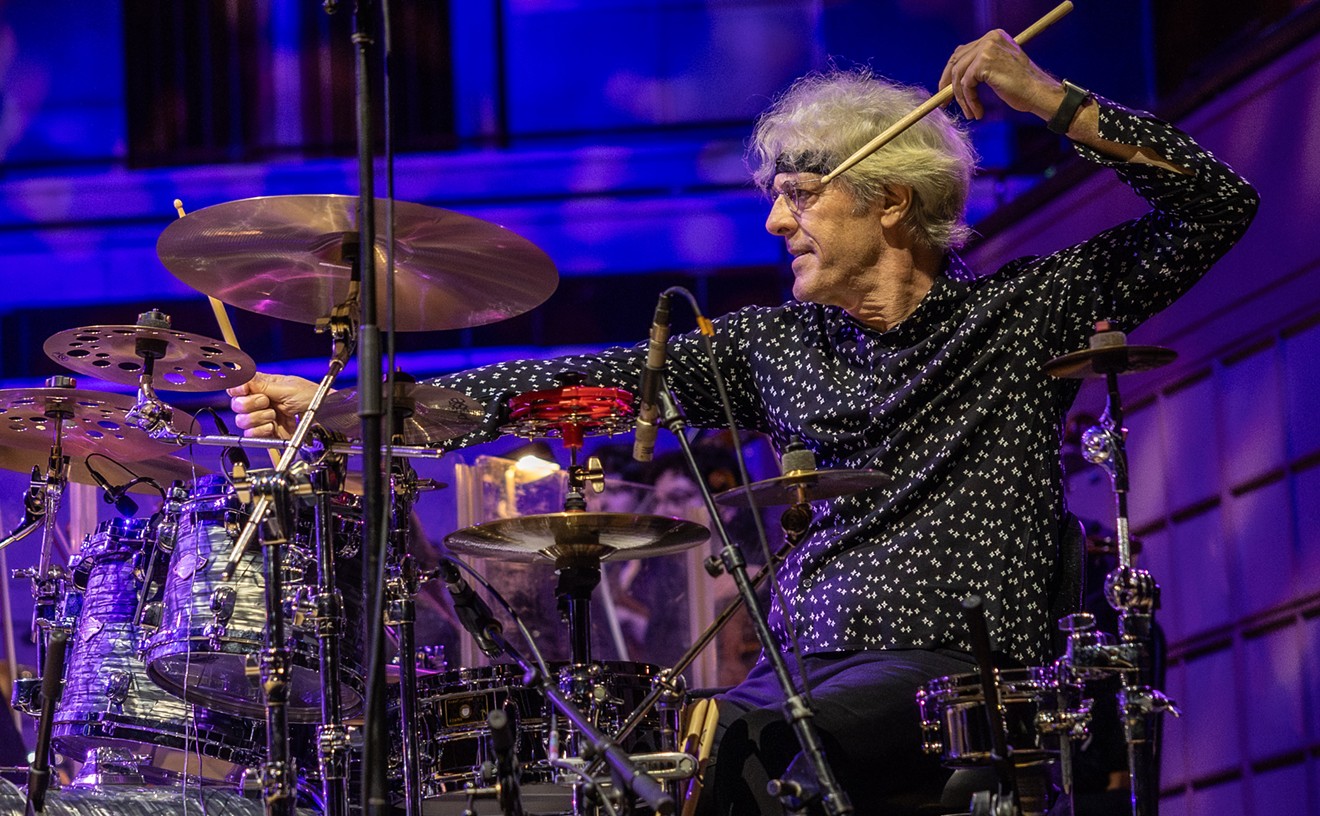Yet no matter how well you think you know this tale, you do not know it at all. It offers the oldest clichés polished up like some brand-new thing by director Greg Whiteley, who knew Kane not as a rocker but as a librarian in the Church of Latter-Day Saints' genealogical library in Los Angeles. Perhaps it could have been made fresh only by someone not schooled in the conventions of rock docs, particularly the subgenre dealing with the rehabilitation of a former legend's has-been status. We've seen this tale told countless times before on VH1, which sold too many burnout tales on Behind the Music and then upended the format by getting back together such insignificant why-are-they-nows as the Motels, Scandal and Vixen on its squandered Bands Reunited series.
Kane was, till the summer of 2004, a footnote to a footnote: the bassist for a band that made two records in four years, then broke up in 1975 just as the getting was getting really good. And in a band like the Dolls, fronted by a madman (Johansen) flanked by a madder man (guitarist Johnny Thunders), Kane was all but the invisible man--the so-called statue at the foot of drummer Jerry Nolan's drum kit, the guy with long frizzy hair who moved only the fingers that kept a steady beat on a shaky tune. "He moved a bit robotically," says famed punk photographer Bob Gruen. "Like Frankenstein." After the band busted up, Thunders and Nolan fronted another legendary outfit of junkie freaks, the Heartbreakers, and wound up dying for their own sins. Johansen turned into Buster Poindexter, a hipster fraud who wound up with bit parts in shit movies and made records to match.
The man called Killer might as well have died, for all anyone cared; most thought he did. But, in truth, he was in a few bands, got married and then divorced when he chose the liquor over the lady, and was taken in by the church when he was near his end. In a delightful scene, two elderly women who work in the LDS library with Kane reveal their amusement and delight when they discover the tall, dull-looking bald man with the look of a slightly tattered Bible salesman was, in fact, part of one of the most influential bands of the early 1970s. "Who'd have thought?" they wonder, giggling.
It was not enough for Kane to have been that; he wanted to be it again, not just to relive it but reclaim the life he'd left behind too soon. And the opportunity arises when Morrissey, the former Smiths frontman who once headed the Dolls' U.K. fan club, asks the surviving bandmates to reunite for the Meltdown Festival, which he's been asked to curate. "He had extreme humility," Morrissey says, with surprising sincerity and affection. "Yet here he is, connected to one of the most raucous, notorious rock and roll bands in musical history." Whiteley also got the camera-shy likes of Bob Geldof and Chrissie Hynde to sing Kane's praises; they love the man, never uttering an unkind word, save for Geldof wondering why the middle-aged Kane would choose leather pants for his onstage attire at this late date.
As the film unfolds, as the band regroups in New York and then in London, it gathers unexpected steam: While Kane wonders how he will be received by Johansen, whom he perceives as some kind of rival despite their years of distance, guitarist Sylvain Sylvain and others wonder if Arthur will even be able to play. Of this, Kane has no doubt: He'll do what he must to recapture "that excitement," to be part of a thing he thought had abandoned him. "For 30 years, I've been ignored and been living in obscurity and been told I'm just a loser." Fortunately for Kane, he had Whiteley beside him, capturing not only the second coming of the Killer, but the second chance given a gentle and beautiful man who played bass for a band that was anything but those things.










